Welcome >> Initiatives – HEARTSafe Community

Becoming a HEARTSafe Community means establishing proactive steps to protect your residents from sudden cardiac arrest. Our community-based quality improvement model focuses on the importance of leadership, collaboration, strategy and tactics in improving cardiac arrest survival in the community through the systematic implementation of 13 specific recommendations or process measures that are based on current science and innovative best practices.
To earn the HEARTSafe distinction, communities work toward three key goals:
Widespread CPR Training
Educate citizens to take action in emergencies.
Accessible AEDs
Place defibrillators in public spaces for rapid response.
Advanced Resuscitation Protocols
Equip first responders and hospitals with best practices.
Communities that meet these criteria earn official HEARTSafe Community recognition, complete with signage and resources to showcase their dedication to public health and safety. To date, over 600 communities have earned this distinction, and we’re actively helping new cities and towns join this growing network.
We’ve compiled some resources below to help you start the HEARTSafe process in your community.
Learn the Requirements
Watch the webinar from the HEARTSafe Program Director and follow along with our guide.
Support for Communities in Progress
Review previous webinars for insights and strategies on becoming HEARTSafe.
Apply for HEARTSafe Status
Ready to take the next step? Submit your application to start the process of becoming a HEARTSafe Community.
If you have questions about the HEARTSafe Community program or would like to schedule a consultation to kickstart the planning process, drop us a note at info@citizencpr.org.
Our HEARTSafe Community program is led by an unmatched array of industry leaders, advocates and healthcare professionals that each offer valuable insights on cardiac arrest survival and help guide the continued implementation of HEARTSafe Community designations.
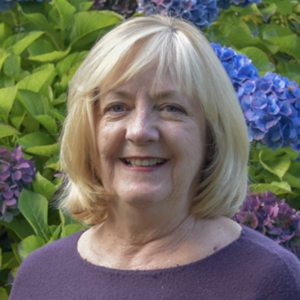
Resurgent Biomedical Consulting team and Via Heart Project
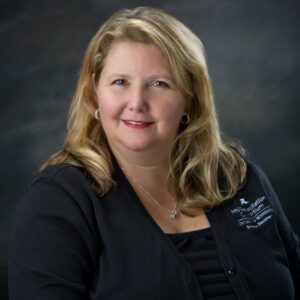
Program Director at the Center for Resuscitation Medicine at the University of Minnesota

Program Director, HEARTSafe Communities and Director of Quality at Code One Training Solutions, LLC

Pediatric Intensivist at Boston Children’s Hospital, Medical Director of the Medical-Surgical ICU and Critical Care Transport Team

Critical Care PA at UConn Health in Farmington, Connecticut
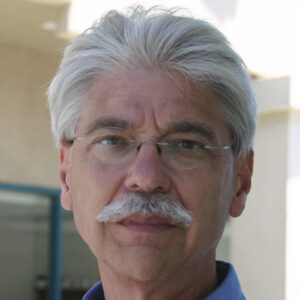
President of the International Academies of Emergency Dispatch

Officer of Coon Rapids, MN
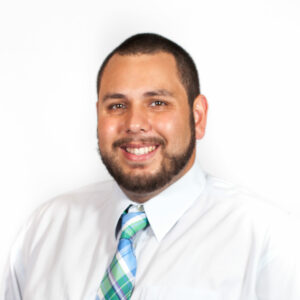
Founder, Code One Training Solutions, LLC

Program Coordinator, HEARTSafe Richland

Associate Medical Director of Emergency Medicine and the EMS Medical Director at Cheshire Medical Center / Dartmouth Hitchcock – Keene, NH

Founder and Chief Consultant for The 110 Group, LLC
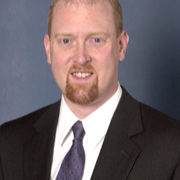
EMS Medical Director, Emergency Department Assistant Director and Stroke Medical Director at Frisbie Memorial Hospital in Rochester, NH
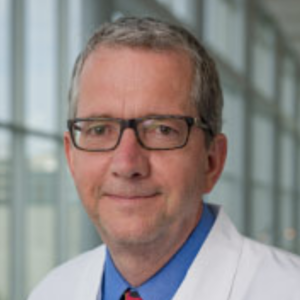
Professor of Medicine and the Director of Cardiac Electrophysiology in the UT Southwestern Department of Internal Medicine’s Division of Cardiology.
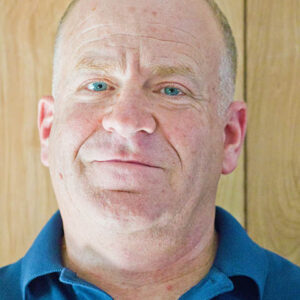
Chief of Cumberland EMS
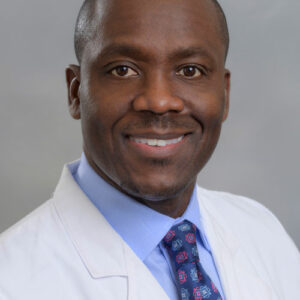
Chief of Cardiothoracic Surgery, Mercy Health System, Trinity Health in Philadelphia, PA

Captain/EMS Coordinator, La Crosse Fire Department
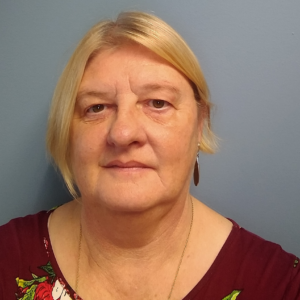
Emergency Cardiovascular Care Program Manager, Montana Department of Public Health and Human Services
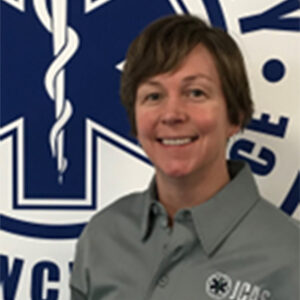
Director of Johnson County Ambulance Service, Iowa City, Iowa
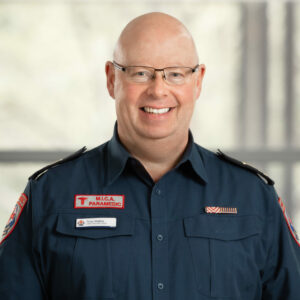
Former Chief Executive Officer, Ambulance Victoria
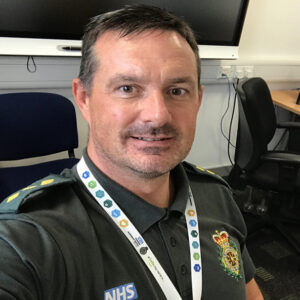
Advanced Paramedic, United Kingdom
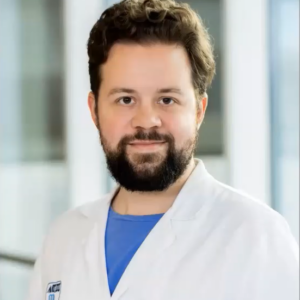
Associate Professor and Internal Medicine Specialist, Medical University of Vienna, Austria
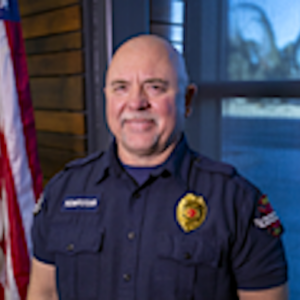
Administrative Battalion Chief, Richland Fire and EMS

Former Regional Director of the American Heart Association (AHA), MENA

Network Manager, Resuscitation Academy Network

Cook County Commissioner, 6th District (Illinois)

Director of the Cardiac Arrhythmia Service, Tufts Medical Center
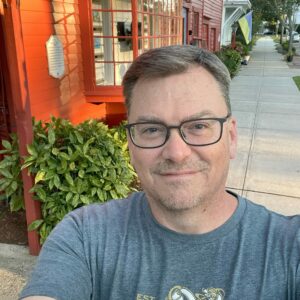
Nonprofit Executive
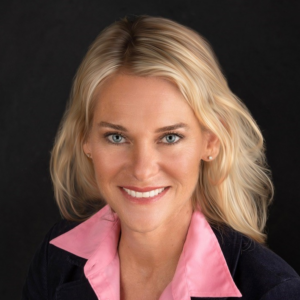
Certified BLS, ACLS, and PALS Instructor; Licensed Paramedic

Implementation Director, Duke Clinical Research Institute

Detroit East Medical Control Authority (MCA), Detroit 911, City of Detroit Fire Department Medical Director
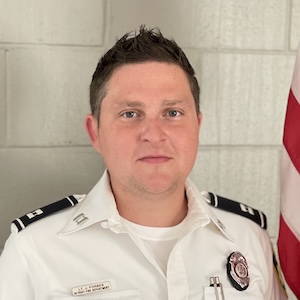
Captain, Paramedic, EMS Program Director Detroit Fire Department
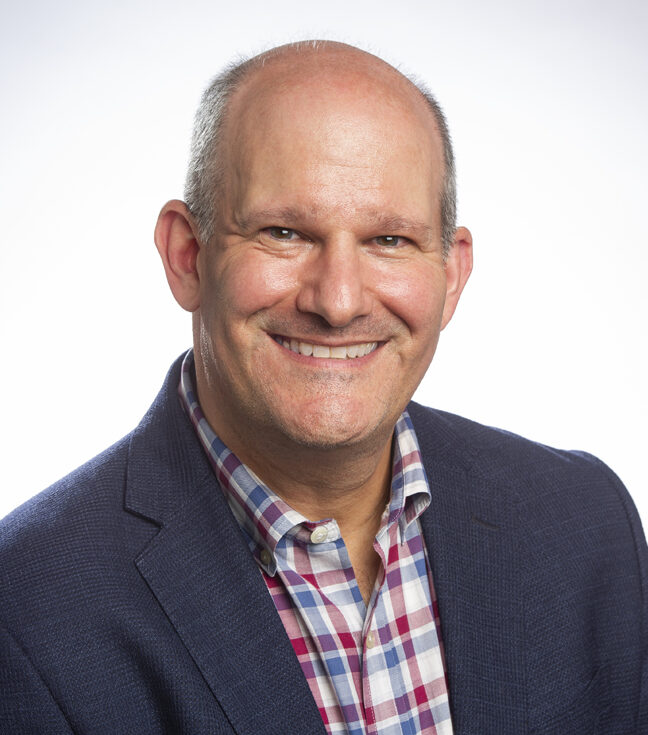
Head of Healthcare Product Management American Red Cross Training Services
Browse our extensive library of webinars that delve into various aspects of HEARTSafe Community planning and designation, best practices, compelling save stories and more.
© 2024 CPR Foundation, Inc.
Resurgent Biomedical Consulting team and Via Heart Project
Pam Dodson retired from the Contra Costa County EMS Agency in California where she developed and coordinated programs for nearly 30 years.
During her time at CCC EMS — determined to increase the sudden cardiac arrest survival rate — Pam implemented the County’s Public Safety AED Program, Public Access AED Program and the Contra Costa County HEARTSafe Community Program. Pam coordinated the System of Care for Cardiac Arrest.
With a passion for changing the culture, Pam’s goal is to make it “normal” to step up and do CPR when someone collapses in cardiac arrest.
Pam graduated from California State University, Los Angeles with a BS in Nursing and a specialty in Critical Care. She worked as an RN in critical care units, emergency medicine and air medical prior to EMS. Pam is a BLS and ACLS instructor.
She currently works with the Resurgent Biomedical Consulting team and Via Heart Project. Pam lives in Benicia, CA. She cherishes every moment she has with her two grown children, Christopher and Kelsey. In her spare time Pam enjoys community service, flower arranging, reading, anything outdoors and is always ready to throw a party.
Program Director at the Center for Resuscitation Medicine at the University of Minnesota
Kim Harkins is currently leading the Center for Resuscitation Medicine at the University of Minnesota as Program Director. She coordinates the mobile ECMO project in the Twin Cities metro area. She holds a Master of Public Health degree from the University of Minnesota and a Bachelor of Science degree in Education from Crown College.
Kim has worked in EMS, the fire service and emergency education for over 20 years.
She has served as AHA regional faculty, on the EMS Educators State Advisory group and currently participates in the Minnesota Sudden Cardiac Arrest Survivors Network, the American Heart Association and various projects such as HEARTSafe Community Designation.
Program Director, HEARTSafe Communities
David Hiltz is Director of Innovation and Customer Experience at Code One Training Solutions, LLC. In this position, he works to ensure responders are ready, willing and able to act when faced with a medical emergency. David is committed to helping organizations improve their systems of care for cardiac arrest. David has an extensive background in cardiac arrest response through his work at Code One and nearly two decades with the American Heart Association, where he was responsible for education, implementation, strategy development, and helping responders achieve improved outcomes.
In addition to his work at Code One, David is an active volunteer with several organizations including the American College of Cardiology and the Citizen CPR Foundation, where he serves as the Director for their HEARTSafe Community initiative.
Pediatric Intensivist at Boston Children’s Hospital, Medical Director of the Medical-Surgical ICU and Critical Care Transport Team
Dr. Kleinman is a pediatric intensivist at Boston Children’s Hospital and serves as the Medical Director of the Medical-Surgical ICU and Critical Care Transport Team. She is responsible for the hospital’s resuscitation program and Training Center, including the system of care to prevent in-patient cardiac arrest.
Dr. Kleinman has volunteered for the American Heart Association at the national level for the past 20 years, including as Chair of the Pediatric Resuscitation Subcommittee and the Emergency Cardiovascular Care Committee. She is a member of the ILCOR Pediatric Task Force and has served on the writing groups for both AHA Guidelines and the ILCOR Consensus on Science with Treatment Recommendations (CoSTR). She is the current vice chair of the AHA’s Get with the Guidelines Pediatric Research Task Force.
Dr. Kleinman’s interests focus on the prevention of in-hospital pediatric cardiac arrest through the use of early warning scores, rapid response teams and physiologic monitoring. She has lectured on these topics nationally and internationally and has taught AHA PALS and PEARS courses in Taiwan, Tanzania, and Italy, among other countries.
Critical Care PA at UConn Health in Farmington, Connecticut
Brandon Oto, PA-C, NREMT, is a critical care PA at UConn Health in Farmington, CT. He completed residency training at Johns Hopkins Hospital and then held a staff ICU position in the University of Maryland system. Prior to that, he was a field EMT in the Massachusetts area. He has an interest in cardiac arrest and has worked with the HEARTSafe program for nearly a decade.
President of the International Academies of Emergency Dispatch
Jerry Overton serves as the President of the International Academies of Emergency Dispatch, the organization charged with setting standards, establishing curriculum, and conducting research for public safety dispatch worldwide. In addition, he is a member of its Board of Trustees and chair of its Institutional Review Board.
Previously, he served as the Chief Executive Officer of the Richmond Ambulance Authority (RAA) in Richmond, VA. Prior to that role, he served as the Chief Executive of the Kansas City, MO EMS system. In addition, he provides technical assistance throughout North America, Europe, Asia, and Africa, having most recently provided assistance to upgrade the EMS system for the country of Lebanon. He is the Past President of the American Ambulance Association, was a member of the Institute of Medicine’s Committee on the Future of Emergency Care in the U. S. Health System, and was the Chief Financial Officer for the World Association of Disaster and Emergency Medicine. As an expert in EMS system design, he was named one of the 20 most influential leaders in EMS by JEMS magazine and has received the Lifetime Achievement Award from the National Association of EMTs and the National Registry of EMTs.
Officer of Coon Rapids, MN
Passion, enthusiasm and people skills have helped Officer Bryan Platz transform the community of Coon Rapids, MN into a HEARTSafe Community. The success of the Coon Rapids program has ignited a firestorm of interest from other communities in creating programs of their own, not only in Minnesota, but around the world. The concept of the program: train the public in Hands-Only CPR and AED use so they can step in to “BE the Help” rather than wait for the help to arrive. So far, over 30,000 community members have been trained in CPR and AED use and the community has already had several “saves.”
Officer Platz helped to designate the first military base in the nation as “HEARTSafe,” as well as two schools in Minnesota. He also worked to pass the AED Announcement Law.
Officer Platz has worked for the Coon Rapids Police Department for over 20 years. He is married and has two sons. He considers himself an all-around nice guy, good police officer and mediocre hockey player. If you meet him, he won’t let you leave the room until you know how to do Hands-Only CPR.
Founder, Code One Training Solutions, LLC
Richard became interested in emergency care and resuscitation at an early age following the death of a sibling. This tragedy led to his involvement in the fire service, EMS and nursing.
Richard founded Code One Training Solutions, LLC in 2007 while attending University of Connecticut’s School of Nursing. Richard recognized the need for consistent CPR training on college campuses as other classes were infrequent, distant, and of varying quality and content. Code One was established to fill this void and its on-campus CPR classes were well-received and highly praised by administration and students alike.
Upon graduation, Richard realized a similar gap existed in the community. Code One then launched its first community training center in 2009 and has continued to grow since then. Code One now operates 10 training centers on the East Coast from Georgia to Maine. Code One has a team of seven full-time staff members and 50 instructors who are all led by Richard as founder.
Program Coordinator, HEARTSafe Richland
Over the past 10 years as an American Heart Association BLS instructor, Josh has been involved in teaching CPR/AED & First Aid to both the general public and healthcare providers. During this time, it was blatantly obvious his community was willing to learn the lifesaving skills of CPR & AED use. However, it was his team that needed to enhance the delivery model and increase the availability of training to more than just the AHA certification classes being offered at the local community college, hospitals and private businesses.
In 2018, Josh encountered an event that he will never forget. After witnessing a woman die after providing the proper ACLS procedure, Josh was responsible for explaining to a loved one, her best friend and father to their children that she was deceased. At that moment, he knew beyond a shadow of a doubt that he could not sit back and passively provide CPR and AED instruction to the community any longer. He knew they needed to come up with a solution that would engage the city and equip them with the tools necessary to overcome emotions, recognize the emergency at hand, and act.
Due to Josh’s efforts, the community is a safer place to live. He enhanced community awareness surrounding the chain of survival. Josh is responsible for transitioning HEARTSafe Richland from a concept to a reality. The Citizen CPR Foundation rewarded his efforts by asking him to participate as a HEARTSafe Community program advisory committee member. To date, Richland Fire & Emergency Services has designated four HEARTSafe Campuses. This program requires 80% of employees in a facility be trained in Hands-Only CPR and have AEDs on-site. He has trained over 5,000 people in Hands-Only CPR, facilitated a chain of survival video, and continues to build partnerships throughout the city and region.
Associate Medical Director of Emergency Medicine and the EMS Medical Director at Cheshire Medical Center / Dartmouth Hitchcock – Keene, NH
Dr. Suozzi has been involved in EMS for over 25 years. He attended medical school at Nova Southeastern University College of Osteopathic Medicine in Ft. Lauderdale, FL and completed his residency training in Emergency Medicine at the University of Connecticut / Hartford Hospital in 2008 and an EMS Fellowship at Hartford Hospital in 2009. He is currently the Associate Medical Director of Emergency Medicine and the EMS Medical Director at Cheshire Medical Center / Dartmouth Hitchcock – Keene, NH. He also serves as Medical Director for New Hampshire e911 and Vermont EMS District 13 Medical Advisor. He is board-certified in Emergency Medicine and Emergency Medical Services.
Founder and Chief Consultant for The 110 Group, LLC
Tim Williams is the Founder and Chief Consultant for The 110 Group, LLC, a veteran-owned consultancy that helps companies adapt to an ever-evolving marketplace and obtain a competitive advantage by improving strategic execution and strengthening resources and capabilities.
For 20 years, Tim worked for the American Heart Association’s (AHA) CPR & First Aid division where he held multiple leadership positions, including: National Director of Sales and the National Director of Operations and Quality, where he led 3,200 contracted business partners and over 400,000 instructors across the U.S.
Tim served in the United States Naval Reserves as a combat medic with the U.S. Marine Corps and was honorably discharged as a First-Class Petty Officer. His early career was as a municipal fire/EMS Lieutenant and training officer; and an EMS Instructor-Coordinator leading a variety of training programs for fire and EMS agencies, as well as healthcare providers and corporations throughout Rhode Island.
EMS Medical Director, Emergency Department Assistant Director and Stroke Medical Director at Frisbie Memorial Hospital in Rochester, NH
Dr. Freese has nearly 30 years of experience in EMS and emergency medicine and presently serves as the EMS Medical Director, Emergency Department Assistant Director and Stroke Medical Director at Frisbie Memorial Hospital in Rochester, NH. In addition, he serves on the New Hampshire Bureau of EMS’s Medical Control Board and is that board’s representative to the New Hampshire Bureau of EMS’s Coordinating Board.
His work in the resuscitation realm began in 1993 shortly after he became an EMT. He became an AHA instructor for BLS and later ACLS and PALS prior to becoming a paramedic in 1995. He is a 1996 graduate of DePauw University with a bachelor’s degree in molecular genetics, completed medical school at Southern Illinois University in 2000, then had the privilege of completing his residency at Indiana University in 2003, working as a paramedic and EMS educator throughout his college and graduate studies.
In 2004, he completed the EMS Fellowship with the Fire Department of New York (FDNY) and was then asked to stay on as a medical director. Eventually promoted to Chief Medical Director, he spent his 10 years with the FDNY working on cardiac arrest survival initiatives, including serving as the principal investigator for the SmartCPR Trial (an international randomized controlled trial assessing the ability of AED algorithms to improve survival by varying the timing of defibrillation based upon ventricular fibrillation waveform properties) and NYC Project Hypothermia (a citywide initiative to ensure the use of targeted temperature management for all admitted out-of-hospital cardiac arrest patients and to assess the impact of intra-arrest cooling on cardiac arrest outcomes).
Professor of Medicine and the Director of Cardiac Electrophysiology in the UT Southwestern Department of Internal Medicine’s Division of Cardiology.
Mark joined the staff there in 1997 and became a full Professor in 2008. He served as Director of Evaluation of Athletes and Co-Director of the university’s Cardiac Electrophysiology Laboratory, Hypertrophic Cardiomyopathy Center, and Heart Station.
He has lectured or presented at conferences, grand rounds, or symposia of organizations including the American College of Cardiology, American Heart Association, Heart Rhythm Society, American Society of Medicine and Sports, Heart Failure Society of America, New England Regional Trauma Conference, and North American Trainers Association.
Chief of Cumberland EMS
John Pliakas is currently the Chief of Cumberland EMS in Cumberland, RI. John has extensive experience in all aspects of emergency and critical care.
Chief of Cardiothoracic Surgery, Mercy Health System, Trinity Health in Philadelphia, PA
Dr. Vigilance’s commitment to improving the health and well-being in under-resourced populations is evident through his work with AHA’s Multicultural Leadership Committee, as well as engagement in the AHA’s Social Determinants of Health Conference. Dr. Vigilance’s efforts in advocacy and community impact led to him being awarded the Great Rivers Affiliate 2019 Multicultural Leadership Award.
Jim serves as a Captain/EMS Coordinator with the La Crosse Fire Department in Wisconsin and has been with LCFD for 15 and a half years. Jim started his career in Rapid City, SD, and eventually moved back to his home state of Wisconsin. Jim became focused on specializing in EMS when he was with the Rapid City Fire Department. He has brought the experience and knowledge gained back to La Crosse and has made it his mission to keep taking the EMS system to the next levels of performance. He is very involved in the La Crosse HEARTSafe program.
Janet Trethewey, EdD, NREMT is the Emergency Cardiovascular Care Program manager at the Montana Department of Public Health and Human Services. She began this position in 2015. Her initial responsibilities were assisting in the development, implementation, and assessment of the emergency cardiac system of care. This position has evolved to include other time-sensitive emergencies such as TBI. She works with communities, 911 dispatch centers, law enforcement agencies, EMS agencies, and hospitals developing cohesive, data-informed systems. She provides training in High-Performance CPR, STEMI and stroke recognition, EPIC-TBI protocols and improved patient care to EMS agencies and critical access hospitals.
Performance Improvement using data-driven assessments is a key interest for her. Her position allows her the privilege of traveling to every community in the state while working with amazing first responders and front-line healthcare workers. Janet also volunteers for a local ambulance service a few times a month to “put her own training into practice.”
She recently enrolled in a paramedic program with the goal of licensing in January 2024. She is active in several professional groups, including the American Heart Association, the HeartRescue Project, the Resuscitation Academy and the Citizen CPR Foundation.
Janet retired after teaching for 25 years at MSU-Northern in Havre, MT. At MSU-Northern, she developed the Health Promotion program and taught courses in health, exercise science and education. She was the first certified athletic trainer to be hired by the College. She continued to be involved in the profession, serving on the Board of Athletic Trainers for Montana for six years.
She is married to a firefighter/EMT and their son is a firefighter/EMT. Their grandson has just become a teenager and starts driver’s training this summer!
Fiona Johnson is the Director of Johnson County Ambulance Service in Iowa City, Iowa. With 26 years in EMS, Fiona has a passion to improve cardiac arrest survival rates in her county by increasing access to 24/7 AEDs and public education on the importance of the chain of survival and bystander intervention.
Tony Walker, ASM, is the former Chief Executive Officer of Ambulance Victoria. He is a Registered Paramedic with over 36 years of experience working in a range of senior clinical, operational and leadership roles within the ambulance sector.
Prior to stepping down as the CEO, Tony led a significant transformation at Ambulance Victoria to improve the health and wellbeing of their workforce and the response they provide to the community.
Tony holds an adjunct appointment as Professor within the Faculty of Medicine, Nursing and Health Sciences at Monash University, Associate Professor in the College of Health and Biomedicine at Victoria University and Clinical Associate Professor in the Department of Critical Care at the University of Melbourne. He is a Fellow of the Australian College of Paramedicine, Chair of the Australasian Council of Ambulance Authorities and a non-executive director of the Emergency Services Foundation and the Prostate Cancer Foundation of Australia.
Tony is a recipient of the Ambulance Service Medal (ASM) for his contribution to the development of ambulance services at a state and national level and has also been awarded the Australian Resuscitation Council Medal for his significant contributions to improving resuscitation practice and outcomes. Tony was also a finalist for the Australian Mental Health Prize in 2019 in recognition of his work in improving paramedic mental health and wellbeing.
Jason Carlyon (pronounced Car-lion) has worked for the ambulance service for 26 years and is an advanced paramedic in the UK.
In his primary role for Yorkshire Ambulance Service, Jason is currently Community Engagement Manager and has led the Restart a Heart campaign since its inception in Yorkshire in 2014. Since 2014, over 200,000 people have been trained across Yorkshire during Restart a Heart Day. Jason has also worked internationally with Sri Lanka as a founding member of the Restart a Heart campaign there and formed the first international partnership in 2016, which led to World Restart a Heart. Jason has worked to address some of the barriers to learning by creating materials in multiple languages and for people with communication difficulties.
Jason also works for the Resuscitation Council UK project managing the national Restart a Heart campaign. World Restart a Heart is the global campaign adopted by ILCOR in 2018 that resulted in over 5 million people being trained across the globe in 2021 on Restart a Heart Day, and even more in 2022.
Dr. Krychtiuk is an Associate Professor and Internal Medicine Specialist at the Department of Internal Medicine II at the Medical University of Vienna, Austria, where he is enrolled in a Cardiology and Critical Care Fellowship. Currently, he is undertaking a clinical research fellowship at the Duke Clinical Research Institute. His main project there is the RACE-CARS trial, a cluster-randomized trial testing the implementation of community interventions to improve survival for people with cardiac arrest all over North Carolina (PI Dr. Christopher Granger, https://racecarstrial.org).
After graduating from high school, Konstantin underwent training to become an EMT, a job that he continued to do part-time during medical school. He then became a CPR instructor and instructor within the EMT/paramedic academy of the St. John Ambulance Service in Vienna. After graduating from medical school, he started his medical training in the form of a three-part training in Internal Medicine, Cardiology and Critical Care. His passion is his clinical and scientific work at the cardiovascular ICU, as well as his function as a board member of the Association of Acute Cardiovascular Care. The RACE CARS trial in North Carolina brings him back to the basics: the first 10 minutes of a cardiac arrest, the all-deciding timeframe where we so often fail to implement what we know works and saves a life.
Administrative Battalion Chief — Richland Fire and EMS
With 37 years of experience in both the fire and EMS industries, Jim has a passion to serve that is stronger today than any other time in his career. He enjoys developing leaders throughout all levels of his organization from fire fighters to chief officers. His role as a chief officer focuses on the importance of being a servant leader and developing a culture of excellence in the workforce. His current body of work includes growing political equity, integrating our organization into the community, building partnerships, enhancing professional business practices, oversight of our development/training initiatives and evolving our delivery model to produce great community outcomes.
His passion to serve in leadership roles extends beyond the traditional fire and EMS industry. A majority of his adult life has included roles and responsibilities of being a community leader as a city council member, planning commissioner, facilitating community initiatives, and serving on an array of boards/commissions.
Zehra’ Al-Hilali is a long-time advocate and promoter of lifesaving programs and activities whether as a volunteer or during her long professional career spanning over three decades. Between 2011 and 2021 she was the Regional Director of the American Heart Association (AHA) in the Middle East and North Africa (MENA). During these 10 years the AHA programs flourished in MENA.
Before joining the AHA, she worked for more than two decades in management and healthcare education in some of the most prestigious healthcare institutions in Saudi Arabia and UAE. She was instrumental in expanding the Trauma Life Support Programs in the Gulf region during her work as the National Coordinator for the Trauma Chapter affiliated with the American College of Surgeons.
Zehra’ organized and led the launch of a largely successful World Restart a Heart campaign in 22 Arab countries in October 2022 focusing on lifesaving training of school and university students, in addition to people with special needs. Lifesaving training equipment was also provided to under-resourced countries during this campaign. During her extensive professional career, she built regional and international connections and affiliations with healthcare authorities and regulatory bodies in Middle Eastern and North African countries, as well as a track record of success in growing revenue, margins, and profitability. Zehra’ is a “Strategic Partnership Builder” who inspires people to make a difference. When working with others, she shares best practices and success stories, empowers them to do more, and helps them to build the right mindset and connection to achieve success.
Zehra’ received several national and international awards and recognition for her work over three decades and is a member of many national and international professional bodies.
Tegan Hampton is the Network Manager for the Resuscitation Academy Network. She has seven years of project and program management experience and is well-versed in quality improvement and change management. Hampton has worked in both hospital and Federally Qualified Health Center (FQHC) settings, and holds a Masters of Health Administration from the University of Cincinnati.
Donna Miller is currently the Cook County [Illinois] Commissioner of the 6th District and serves as Vice Chair of Contract Compliance, Workforce Development & Veterans Committees, and Chairman of the Forest Preserve District Contract Compliance Committee. She has a background as a healthcare consultant working with leading pharmaceutical and biotech companies. Donna has tremendous experience in sales, training and development, and bringing together collaborations for new business with healthcare companies. She has received numerous awards and recognition for her professional accomplishments.
Commissioner Miller’s political involvement includes membership in the League of Women Voters, serving as Board Chair for Planned Parenthood of Illinois, Board Chair of Planned Parenthood Illinois Action Committee, Vice-President of Illinois Democratic Women, and former President of Democratic Women of the South Suburbs. During the 2016 Presidential Election, Donna was part of the Illinois Delegation during the Democratic National Convention serving on the Rules Committee in Philadelphia, PA.
Most recently, Commissioner Miller received a 2022 National Association of Counties Award for her CPR and AED Awareness and Training campaign promoting heart health. She was recognized by the Global Eye Magazine and Indian American Business Coalition as one of the top 20 Chicagoland Women of Excellence 2022. She is also a member of Alpha Kappa Alpha Sorority Incorporated – Lambda Tau Omega Chapter.
Donna is often asked to speak to students as a mentor and role model and is truly passionate about empowering the youth to realize a significant future. She is married to the Honorable Dr. David E. Miller and has two sons.
Dr. Christopher Madias is a graduate of Tufts University School of Medicine. He completed his residency in Internal Medicine at the Weill-Cornell New York Presbyterian Hospital and his fellowships in Cardiovascular Disease and Clinical Cardiac Electrophysiology at Tufts Medical Center. He served as Staff Electrophysiologist at Rush University Medical Center in Chicago for six years before returning to Boston, where he currently serves as Director of the Cardiac Arrhythmia Service at Tufts Medical Center.
His research interests include sudden cardiac death prevention in hypertrophic cardiomyopathy and he has contributed to the understanding of the pathophysiology of cardiac arrhythmias associated with stress cardiomyopathy and commotio cordis. Dr. Madias is Assistant Professor of Medicine at Tufts University School of Medicine and is a Fellow of the Heart Rhythm Society and the American College of Cardiology.
Jay Blackwell is a non-profit executive with over 30 years of experience at both the national and local levels. He began his career in Dallas at AIDS Interfaith Network where he served as Assistant Executive Director over their development and volunteer programs. In 2001, Jay moved to Boston and began his 20-plus-year career with the American Heart Association. After beginning as a local development director over their Heart Ball, he rose to the role of National Gala Director, leading their $65 million campaign with one of his key initiatives being the “Open Your Heart” campaign, which launched a partnership with the Clinton Foundation focused on childhood obesity. He has also served as SVP in DC, Chicago and most recently in Boston.
Jay is also a cardiac arrest survivor, having suffered his arrest in December 2021. His first heart attack happened in 2016 while at the gym. Learning that no one at the gym knew CPR had he gone down, he worked with the facility staff to get them trained and have an AED on-premise. He now resides in Durham, NC, and is doing well working as a consultant with various non-profits in the areas of fundraising, board development, team building and volunteer management. He is dog dad to Ollie, sings in his local church choir and is thrilled to have been cleared to travel internationally again, which is a passion.
Susan B. Davis, DNP, MSN, RN, PMD, is a certified BLS, ACLS, and PALS instructor and a licensed paramedic specializing in in-hospital resuscitation education. Focused on optimizing Code Blue processes and outcomes, Dr. Davis aims to elevate the resuscitation self-efficacy of healthcare professionals in life-saving techniques, with a particular emphasis on mastering foundational skills.
Extending her impact beyond hospital walls, Dr. Davis has pioneered the HEARTSafe program in southwest Florida, serving as a leader in community health and safety. She is the impetus behind the implementation of specialized rescue drill programs designed to empower healthcare providers and community members in resuscitative efforts. With her goal of establishing a nationwide network of High-Performance Resuscitation Hospitals, Dr. Davis aspires to bring the high level of proficiency commonly seen in pre-hospital settings to hospital bedside teams. Through her multifaceted initiatives, she aims to drive forward the standards of care in resuscitation, instilling both proficiency and confidence in healthcare teams and thereby contributing to saving lives.
Implementation Director, Duke Clinical Research Institute
A leading quality improvement and implementation science expert and recognized change agent for state and national systems implementation work, Lisa Monk, MSN, RN, CPHQ, has proven success in project implementation and 30+ years of leading faculty, healthcare workers, administrators, professional organizations, and survivors in advocating for systematic changes that save lives and improve outcomes.
Detroit East Medical Control Authority (MCA), Detroit 911, City of Detroit Fire Department Medical Director
Robert Dunne graduated from the University of Michigan’s Inteflex program (a combined bachelor’s degree MD program). He completed emergency medicine residency training at Henry Ford Hospital in Detroit, MI, where he was chief resident. He is currently medical director of Detroit East Medical Control Authority (MCA), Detroit 911 and the City of Detroit Fire Department. He is the author of peer-reviewed papers, book chapters and educational materials. He lectures extensively on EMS, preparedness and topics in trauma and emergency medicine.
He is subspecialty board-certified in EMS by the American Board of Medical Specialties, the program director of the WSU EMS fellowship, and is a full professor at Wayne State University, School of Medicine. Dr. Dunne has been involved in multiple research projects in EMS, including EFIC trials. These include the steering committee of the Public Access Defibrillation Trial (PAD), investigator for the RES-Q trial, the RAMPART trial, the Poly Heme Trial and other local and national trials. His overall research focus has been on improving care of the most vulnerable patients in the most acute medical situations.
He has been managing the Detroit agency data of the Cardiac Arrest Registry to Enhance Survival (CARES) and the Detroit EMS clinical data. The MCA also serves as the conduit for EMS and hospital data relating to patients treated in the pre-hospital environment. He has led community outreach and coordinated efforts to make Detroit a HEARTSafe City, a designation that Detroit achieved in 2024.
He served as Regional Deputy Chief Medical Officer (Region V) for the National Disaster Medical System and is on MI-1 DMAT. He serves on the State of Michigan Emergency Medical Services Coordinating Committee. He is past President of Michigan’s American College of Emergency Physicians (ACEP) chapter and current chair of the MCEP state EMS committee.
He has led community responder efforts to teach residents how to respond to cardiac arrests, opioid overdose and traumatic injury. He provides medical direction for the opioid response initiatives for the city of Detroit and established the medication-assisted treatments (MAT) program at St John Hospital. He has consulted for inpatients of risk assessment and MAT.
During the pandemic, Dr Dunne has filled many roles across the region. His EMS role expanded to include all of public safety and serves as a medical advisor to the City of Detroit. He served as interim medical director for the Detroit Health Department.
Captain, Paramedic, EMS Program Director
Detroit Fire Department
Jeff’s extensive 18-year career in both Fire and EMS reflects a deep commitment to education and public safety. His leadership in overseeing EMS Training for the Detroit Fire Department has played a pivotal role in shaping the city’s Fire Department. As a certified instructor for both the American Heart Association and the Red Cross and a Paramedic Instructor-Coordinator, Jeff’s dedication to continuous education is clear.
His involvement in making Detroit a HEARTsafe Community further highlights his passion for creating a safer environment through education and proactive health measures. His work ensures that both the EMS and Fire sectors are not only trained but prepared to serve the community at the highest level of care and safety. Detroit is undoubtedly stronger and safer because of his leadership and unwavering commitment.
Head of Healthcare Product Management
American Red Cross Training Services
Jonathan Epstein, MEMS, NRP, re-joined the American Red Cross to the lead the Healthcare Product Management team in 2023 after serving as the Head of Product and Customer Experience for Health Scholars. Jonathan brings a focus on bringing the Voice of the Customer (VoC) to the forefront of healthcare and EMS educational products and services.
Previously, Jonathan served as the Senior Director for Science, Industry and Government Relations at the American Red Cross within the Training Services Division. He lent his extensive clinical, education and training expertise to the development of Red Cross learning and development products and materials for healthcare and public safety professionals.
Epstein is an emeritus member of the American Red Cross Scientific Advisory Council, one of the country’s foremost independent panels on First Aid, resuscitation, emergency preparedness and safety. The Council guides the Red Cross on emergency and safety treatments and practices that align with the latest evidence-based scientific and medical knowledge. Epstein served on the Council for 14 years as one of its original members.
Jonathan previously served for 17 years at Northeast Emergency Medical Services, Inc., the Massachusetts Region III EMS Council, and 15 years as its Executive Director. The nonprofit organization is responsible for coordinating the EMS system for the 49 towns and cities northeast of the City of Boston.
Jonathan has been married for 29 years to his wife Randi and has two children, Sarah and Sam, who are beginning their careers in sports marketing and government/policy development, respectively. He is a native of Massachusetts, living about 20 minutes west of Boston.
Fun fact: Jonathan has never had a cup of coffee but is addicted to iced tea.